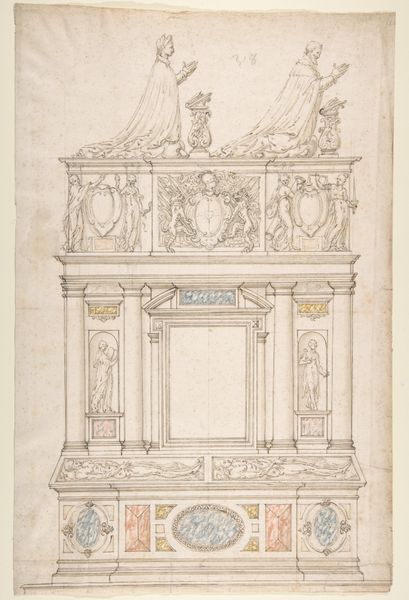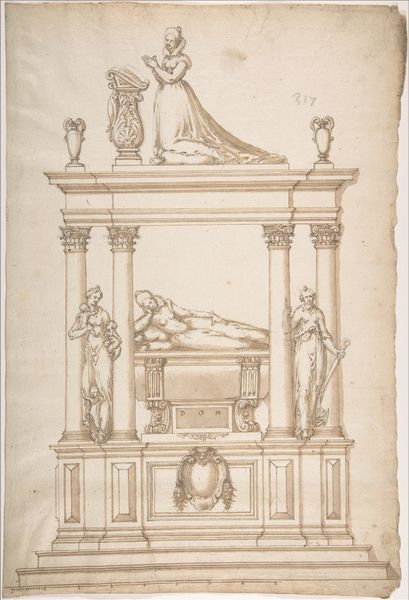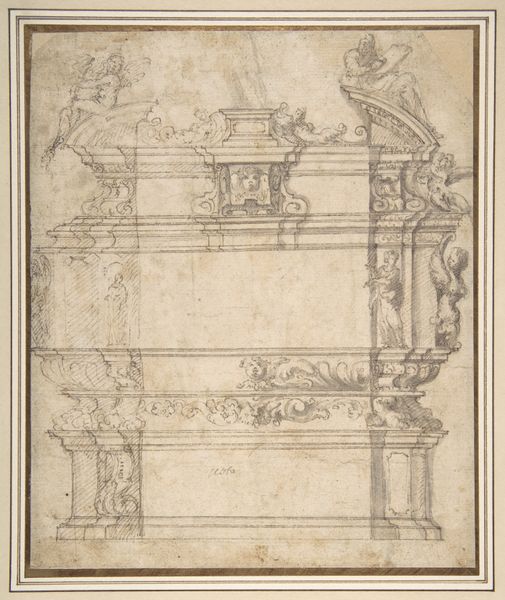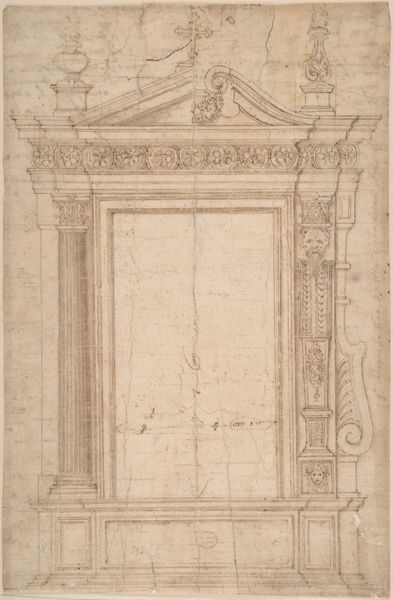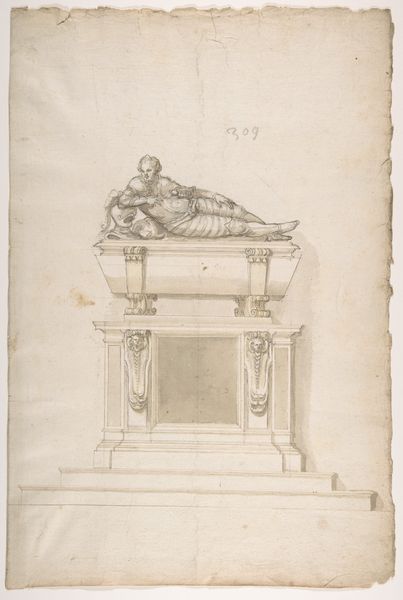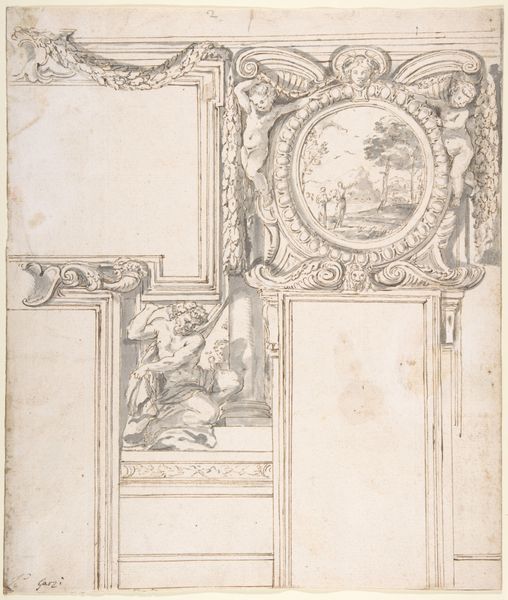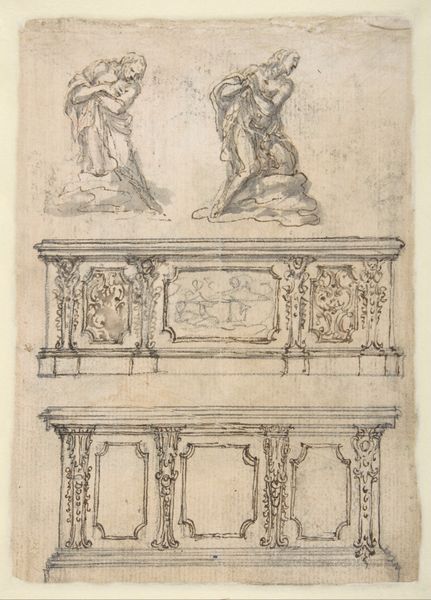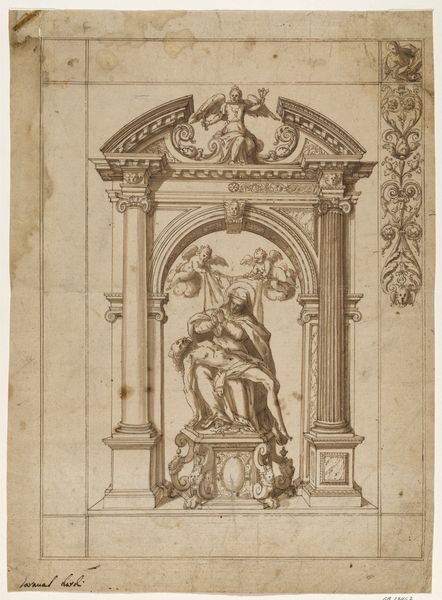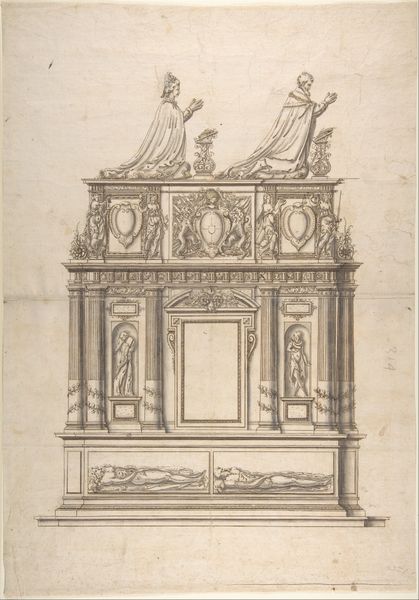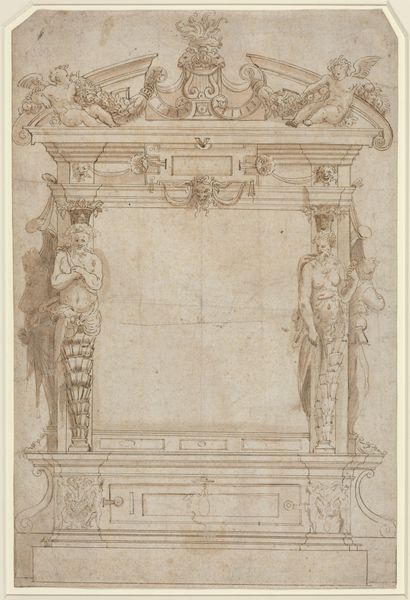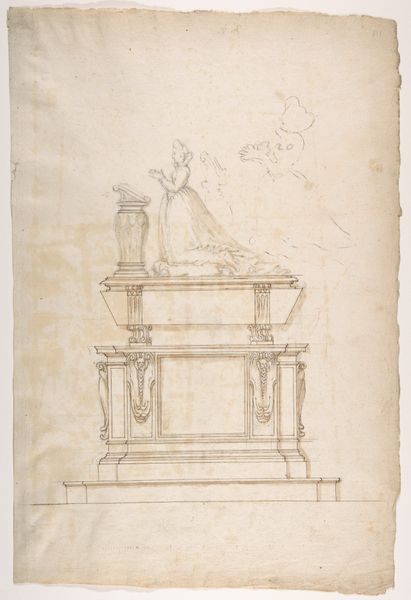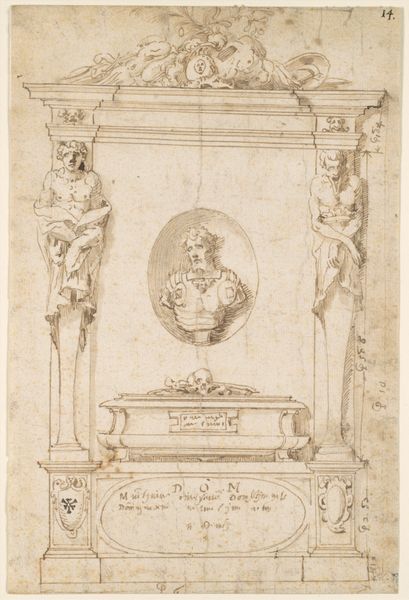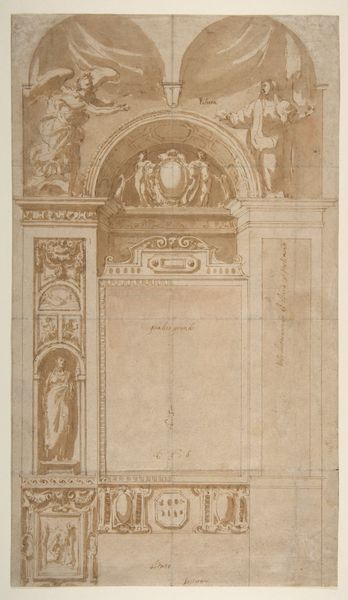
drawing, print, pencil, architecture
#
drawing
# print
#
etching
#
11_renaissance
#
pencil
#
italian-renaissance
#
watercolor
#
architecture
Dimensions: 14-3/8 x 9-1/16 in. (36.5 x 23 cm)
Copyright: Public Domain
Curator: What a stark and haunting composition. The sepia tones create an atmosphere of solemnity, wouldn't you agree? Editor: It does evoke a sense of stillness, but I am drawn to its deliberate architecture. Here, we have an early 16th-century design, entitled "Design for a Wall Tomb," executed sometime between 1519 and 1529. While the artist remains anonymous, this drawing incorporates pencil, watercolor, and etching. The materials highlight how integral drawing and printing processes were to circulating design ideas for architectural projects. Curator: Indeed, it speaks to a very specific tradition of mourning and commemoration. Notice how the figure reclines, not quite asleep, but eternally resting. This symbolizes a transition to the afterlife. The niche is classicizing in form; one imagines powerful families desiring their lineage enshrined this way. Editor: Exactly, those emblems point toward patronage, which makes me consider where the materials originate from: Where would the stone for this tomb have been quarried, and how was it transported? Curator: I am sure that, given this tomb was most likely planned to hold someone wealthy, these are rare materials to consecrate legacy. There is an echo here of classical ideals too, something enduring and eternal created for earthly viewing. Editor: It all emphasizes how architecture itself can perform grief and display not only emotional, but also material wealth, doesn’t it? I find it fascinating how designs like this spread artistic ideas during the Renaissance through reproducible media like prints, extending reach and cultural memory through its very circulation. Curator: Thank you for helping bring light to the artistic ideas and processes intertwined in this powerful funerary artwork! Editor: Indeed! It has given us both much to think about regarding materiality and its impact in art!
Comments
No comments
Be the first to comment and join the conversation on the ultimate creative platform.
